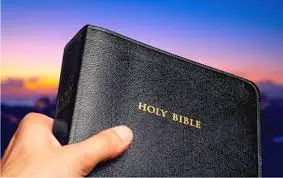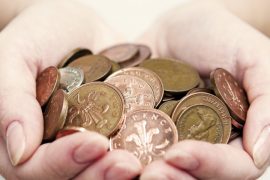Biblical Meaning Of Coins In Dreams
Biblical meaning of coins in dreams. To dream of coins represents positive feelings about power or resources that you can use whenever you want. Noticing yourself liking something valuable you have. You may be admiring opportunities or possibilities that are always available to you. Enjoying knowing you have power or freedom that is always there if you want it.
In the Bible, silver is associated with knowledge, redemption, refining, idolatry, or even spiritual adultery. Besides, silver coins point to suggest revelation or knowledge.
Biblical Meaning Of Coins In Dreams
Coins as a Christian Symbol represent human greed and avarice. In Christian Art coins are often shown numbering thirty which representative of the betrayal of Jesus by Judas Iscariot. The part coins play is detailed in Matthew 26:14-16 where Judas Agrees to Betray Jesus:
14 Then one of the Twelve—the one called Judas Iscariot—went to the chief priests
15 And asked, “What are you willing to give me if I deliver him over to you?” So they counted out for him thirty pieces of silver.
16 From then on Judas watched for an opportunity to hand him over.
The Easton Bible Dictionary provides the following definition, meaning and reference to coins in the Bible.

Before the Exile the Jews had no regularly stamped money. They made use of uncoined shekels or talents of silver, which they weighed out (Gen. 23:16; Ex. 38:24; 2 Sam. 18:12). Probably the silver ingots used in the time of Abraham may have been of a fixed weight, which was in some way indicated on them.
The “pieces of silver” paid by Abimelech to Abraham (Gen. 20:16), and those also for which Joseph was sold (37:28), were probably in the form of rings.
The shekel was the common standard of weight and value among the Hebrews down to the time of the Captivity. Only once is a shekel of gold mentioned (1 Chr. 21:25). The “six thousand of gold” mentioned in the transaction between Naaman and Gehazi (2 Kings 5:5) were probably so many shekels of gold. The “piece of money” mentioned in Job 42:11; Gen. 33:19 (marg., “lambs”) was the Hebrew _kesitah_, probably an uncoined piece of silver of a certain weight in the form of a sheep or lamb, or perhaps having on it such an impression. The same Hebrew word is used in Josh. 24:32, which is rendered by Wickliffe “an hundred yonge scheep.”
Other Dream Meanings About Coins
Losing coins
Losing coins that you sheltered or collected inside your home is often connected with minor achievements or blessings, particularly when it comes to business. This signifies that you are supposed to achieve some advancement that will yield useful but temporary compensation. While it may not make you a renowned celebrity, with hard work and perseverance, this modest compensation could be the stepping stone to something monumental.
Gold coins
Gold coins symbolize riches, or accumulated wealth, according to dream books interpretations. This is not just an ordinary vision. Presumably, you are chosen by fate, and you expect a lot of pleasant surprises. Gold coins reveal that you must be prepared for vibrant and positive transformations. This dream also symbolizes the commencement of an intriguing adventure.
Copper coins
Dreams concerning coins that appear to be made of copper are often viewed as a sign that you are about to encounter a period of comfort and pleasure. Moreover, this is not anticipated to denote a miracle shift in your situation. Instead, this shift can happen through the contribution of your abilities, which means that if you struggle hard and do good for others, it will allow you to improve and prosper.
Metal coins
Metal coins are generally a symbol of physical risk, such as a shipwreck, plane crash, or car breakdown while traveling
To dream of coins manufactured from materials other than silver and gold, such as copper, steel, etc., seems to denote a disaster-related omen when traveling or away from your home’s protection.
Shiny coins
Seeing, holding, or using notably shiny coins is often viewed as a propitious sign of excellent luck and achievement within the framework of a dream. This specifies that in the activities you are presently engaged in, you are likely to achieve steady advancement and beneficial results. This dream
may be linked to business as well as private issues.
New coins
When seen in a dream, newly, lately issued coins symbolize unexpected economic profits. This implies that you will probably gain some additional cash or other material resources from an uncommon or unexpected person or location.
This dream may be in anticipation of pledging allegiance to a particular cause or for no purpose whatsoever.
Old coins
Having a dream of ancient coins that can be collected, whether you own them or see them somewhere, predicts dealing with tedious and challenging work. These time-consuming activities, such as filling out documents, moving around to different locations, are all expected to be chasing some objective you are working towards at the moment.
Examining or finding old, ancient coins, such as in a museum or secret collection, is often perceived as a sign that you are in or about to reach a period associated with self-reflection and exploration, which means that you gather knowledge and convert it into wisdom.
Coins of the Bible
Few tangible reminders of everyday life have seen as little change over the centuries as have coins. Except for production techniques, coins have received little improvement in concept from Bible times.The value of gold and silver as a medium of exchange was widely known, of course, even before the invention of coins. In the Old Testament we find references to such usage. Abraham’s wealth was measured in gold, silver, and cattle (Gen. 13:2). When precious metals were meant to be used as money they were formed into ingots or wedges (such as Achan’s wedge of Joshua 7:21) and large rings, easy to transport (the bundles of money of Genesis 42:35). This latter usage is preserved in the word kikkar, or talent, meaning “circular” or “ringlike.”
Before coins in standard shapes and sizes were invented, payment was determined by weight. In fact, the terms “to pay” and “to weigh” were ex pressed by the one word shaqal. From this verb we get the word shekel (or more accurately, sheqel), which came to denote a somewhat fixed weight of approximately 12 to 14 grams.
By the time of Solomon standardized stone weights, some with inscriptions of values, were used to determine the value of precious metals in barter transactions. Solomon warned against the practice of cheating by using more than one set of weights (Prov. 20:23).
Herodotus accurately assigned the invention of coinage to the Lydians, a small but wealthy merchant nation in western Asia Minor. The first coins, minted about 640 B.C., were struck in electrum, a naturally occurring alloy of gold and silver, originally thought to be an element in its own right. Soon gold alone was being used; silver followed in the time of Croesus (mid-sixth century B.C.). These tiny coins were of similar styles, having either a crude animal (often a lion) or geometric designs on one side, and deep incuse, or sunken, impressions on the other.
When, in 547 B.C., Cyrus took Sardis, and all Asia Minor became a Persian possession, the Persians quickly saw the advantages of the coin. Darius I (Hystaspis) (521-486 B.C.) introduced the gold daric, perhaps named after himself, and its silver counterpart, the siglos. These coins were the first to depict a human being (the issuing king). The daric is mentioned in the Old Testament in Ezra 2:69 and 1 Chronicles 29:7, and it is probably the coin mentioned in Ezra 8:27 and Nehemiah 7:70-72, although different words are used. Also, the shekel of Nehemiah 5:15 may refer to the siglos. These are the only Old Testament coin references.
By the end of the fifth century B.C. coins were being produced in Gaza, Aradus, Tyre, and Sidon, but the Persians deserve the credit for introducing coinage to Israel. Small silver coins, perhaps minted locally, exist with the word Yehud, the Persian name for the province of Judea, inscribed in Aramaic. These were struck in the fifth and fourth centuries B.C.
One coin of particular interest shows a bearded head in a Corinthian helmet on the obverse, and a throned deity on the reverse. Since rendering a conquered nation’s god on local coinage was a common Persian practice, it is generally thought that this deity is none other than a Persian representation of the God of the Jews (based, perhaps, on Ezekiel’s vision), and thus unique in coinage. The rarity of the coin suggests its unpopularity in Judea.
With the entrance of Alexander III (the Great) came the Attic standard of coinage, consisting of the drachma. Alexander established dozens of mints throughout his empire. Acre, later called Ptolemais, became the mint for Pales tine. Alexander’s coinage became a standard for centuries. On the obverse of his drachma and tetradrachma was depicted Hercules (or Alexander as Hercules), and the reverse pictured a seated Zeus. The already old custom of placing a “mintmark” on the reverse was continued. The usual legend consisted of Alexandrou—that is, Alexander’s (money). The quality of these coins was excellent; they were popular and often counterfeited. The following Ptolemaic and Seleucid rulers continued using similar styles and weights.
The earliest Jewish ruler to strike coins was Alexander Yannai (Jannaeus) 104-78 B.C. For reasons of political dependency and poor economic conditions, these coins were struck only in bronze. Jewish silver coins weren’t made until the time of the first Jewish revolt, A.D. 66-70. Jewish coins were never made in gold.
Both in style and weight Yannai’s first coin resembled an earlier coin struck in Jerusalem between 132 and 130 B.C. by the Seleucid ruler Antiochus VII (Sidetes). It was slightly smaller than a United States cent and bore a lily on the obverse, with an anchor on the reverse. Yannai’s coins had both Hebrew and Greek inscriptions. The Hasmonaeans retained the Hebrew script on coins, as more classical, albeit less common, than the spoken Aramaic.
Herod the Great (37-4 B.C.) showed his desire for strengthening foreign elements in Judaea by means of his coins. Only Greek inscriptions were used, a practice copied by his sons. The military character of his reign also shows on his coins in such symbols as shields, helmets, and warships.
Though usually careful not to offend his Jewish subjects, Herod made the only coin ever produced by a Jew for Jews depicting a living thing (contrary to the second commandment). The small bronze coin carried the figure of an eagle—probably the same eagle figure, erected on a Roman-style standard in the Temple courtyard, that caused a riot at the end of Herod’s reign. If so, we can date this coin to about the time of Christ’s birth—5 or 4 B.C.
Archelaus (Judea, Samaria, and Idumea), Antipas (Galilee and Perea), and Philip (Ituraea, Trachonitis, and other territories) continued minting bronze coins of various sizes, all bearing both the name of Caesar and their own. Later Herods showed less and less Jewish flavor on their coins, preferring to imitate Roman coins.

